
Magpie on the gallows – a picture of Peter Brueghel the Elder. Written in 1568 by oil on wood. It is kept in the museum of the land of Hesse in Darmstadt.
The central part of the picture is occupied by a gallows, on which sits forty. The bird personifies talkativeness, leading to slander and betrayal. The image of the peasants dancing under the gallows probably refers to the Flemish proverb “The roads to the gallows go through merry lawns.” The painting refers to the late period of the work of Brueghel, written by him a year before his death.
The artist highly valued the work and bequeathed it to his wife Meiken Cook. Bruegel addressed to the themes of folklore and earlier. The most famous in this regard is his work “Flemish proverbs.”
The view from above is typical for paintings by Brueghel. Thanks to this foreshortening, the viewer seems to look at what is happening detached. The landscape embodies the entire universe, in which the drama unfolds.
The carelessness of dancing peasants contrasts with the huge gallows, which they seem to overlook. Perhaps, for the consciousness of a medieval man, the contrast was not so striking. The tools for the execution of death sentences were exhibited in prominent places for edification, so the plot of the dance under the gallows was inspired by the harsh reality. The gallows are similar in shape to the impossible figure.
The landscape plays in the picture is not a decorative, but a meaningful role. This is not scenery for the genre scene, but the embodiment of the whole universe. In this sense, Bruegel continues the iconographic tradition: against the backdrop of the landscape, what is happening on the canvas acquires a universal sound.
Contemporaries gallows was perceived as a symbol of struggle with dissent. Bruegel was about twenty, when in massacres in Amsterdam and other cities mass burned Anabaptists. When he was about forty, the army of Duke Alba entered Brussels. Subsequent years, Alba was engaged in the furious destruction of heretics. several thousand Dutch people were sentenced to death. The gallows waited for the preachers, who carried a new, Protestant faith in the masses. The terror of Alba was rumored and denunciatory, so the choice of magpies as a symbol of talkativeness in the picture is not accidental.
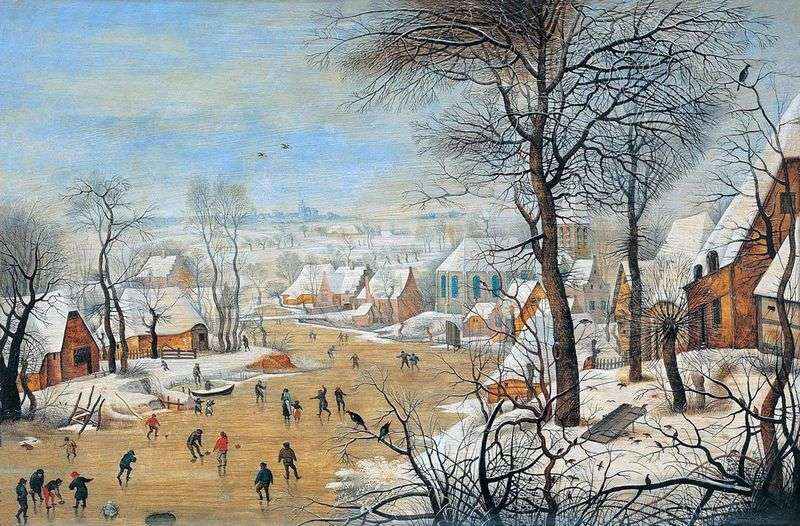 Landscape with skaters and a trap for birds by Peter Brueghel
Landscape with skaters and a trap for birds by Peter Brueghel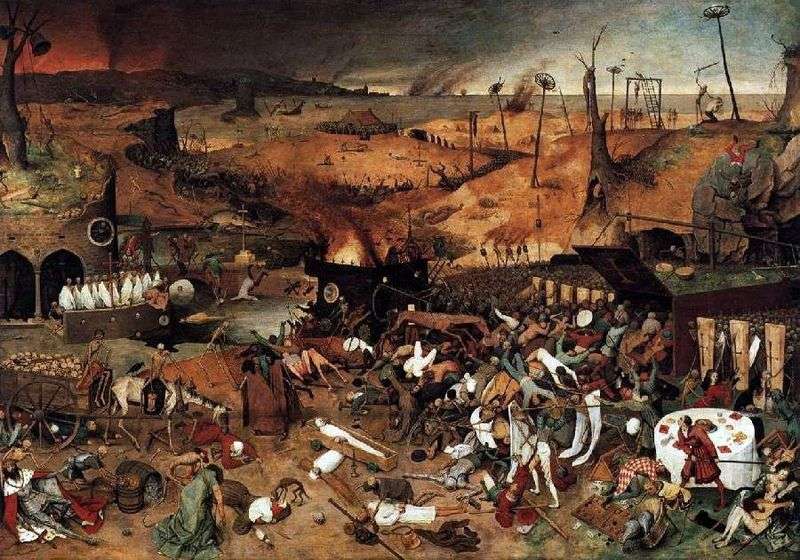 The Triumph of Death by Peter Brueghel
The Triumph of Death by Peter Brueghel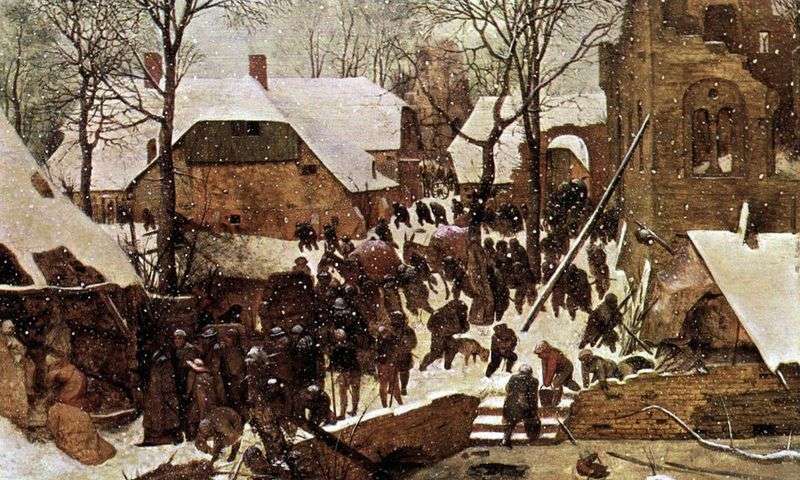 The Adoration of the Magi in the Winter Landscape by Peter Brueghel
The Adoration of the Magi in the Winter Landscape by Peter Brueghel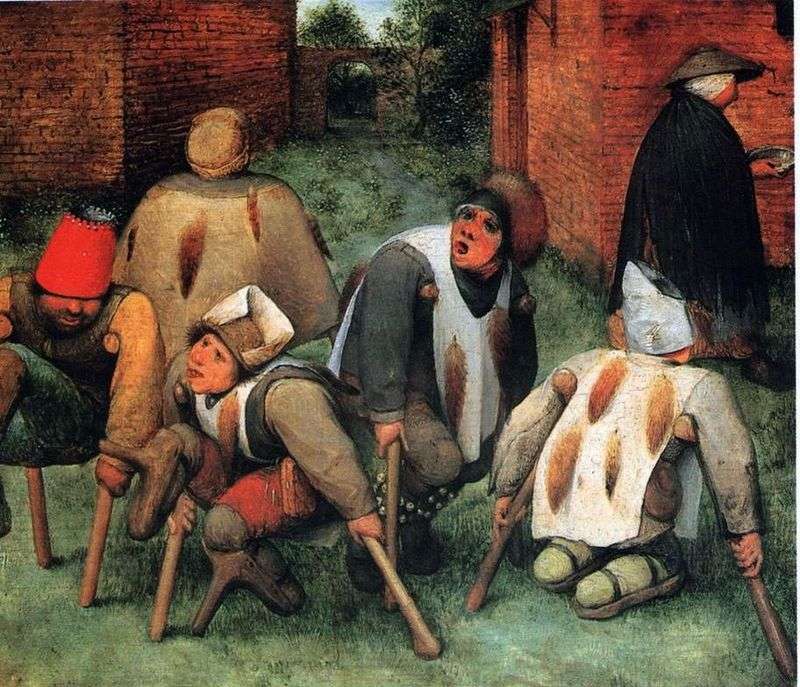 Cripples by Peter Brueghel
Cripples by Peter Brueghel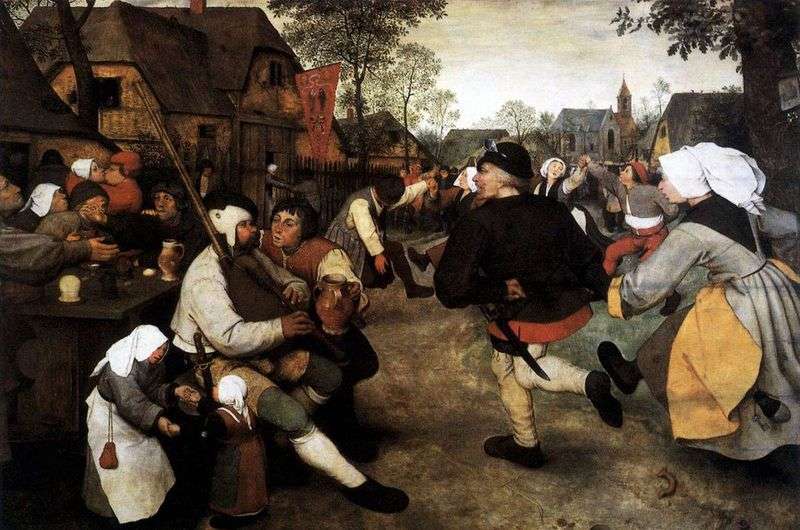 Peasant Dance by Peter Brueghel
Peasant Dance by Peter Brueghel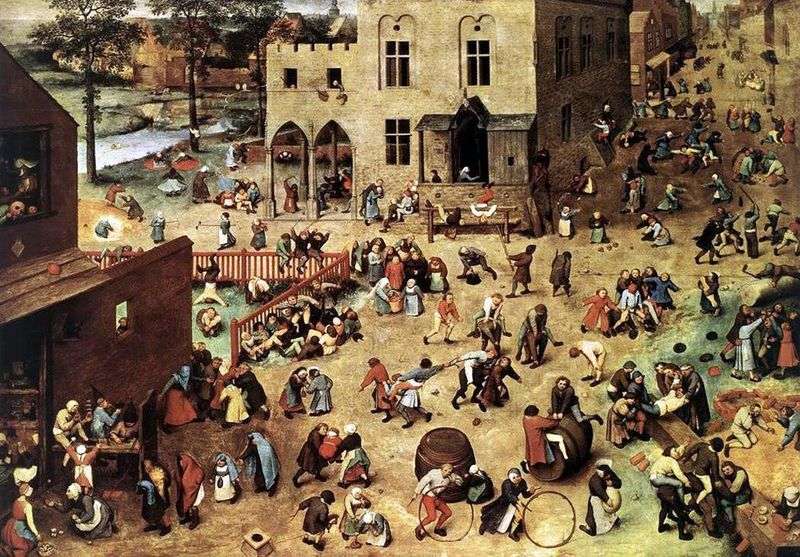 Children’s Games by Peter Brueghel
Children’s Games by Peter Brueghel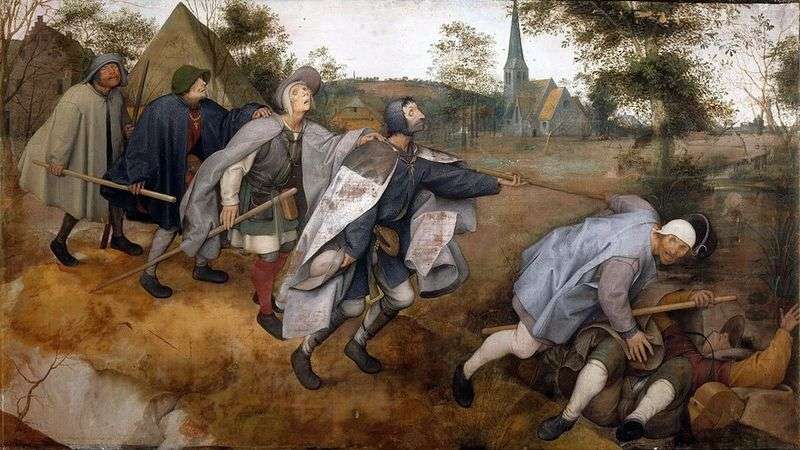 The Parable of the Blind by Peter Brueghel
The Parable of the Blind by Peter Brueghel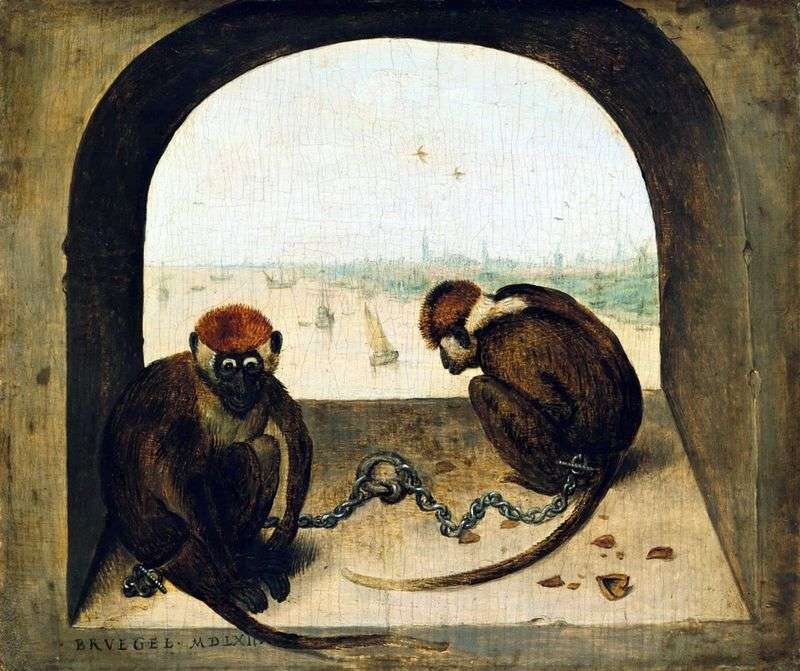 Two monkeys by Peter Brueghel
Two monkeys by Peter Brueghel